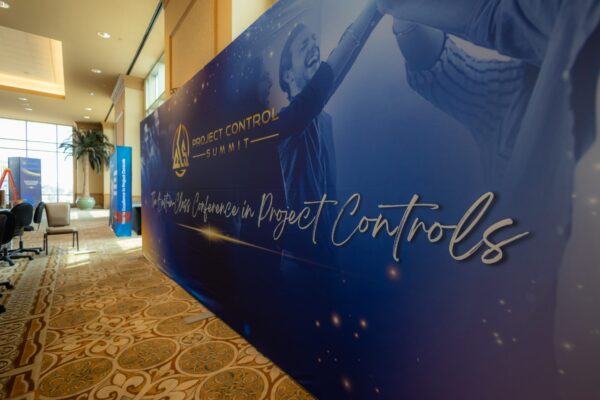

During my 39 years managing projects and programs in the construction industry, I’ve seen many things change. Program Management Information Systems have become more sophisticated, with customizable dashboards, smart workflows, and an ever increasing variety of data input and output options; client priorities have evolved to encompass greater degrees of inclusivity, equity among team members and stakeholders, and sustainability; Building Information Modeling (BIM) and Virtual Design & Construction (VDC) tools have enabled greater precision and control; and exciting technologies like artificial intelligence and machine learning have started making some of our work, such as cost estimating and inspection, much easier. Just like when I started my career in 1982, however, communication remains the cornerstone and hallmark of any well executed construction program.
To understand why communication is so important to program success, it is important to understand what sort of thing a construction program is. A program is not a project. The distinction, simply put, is: a construction project is an effort to build, repair, or renovate something to produce an output—a road, a school, a monument. A construction program is a coordinated effort to complete several projects—a road and a school and a monument—as a cohesive outcome. Likewise, while a project manager’s job is to help ensure a construction project is designed and built according to an owner’s specifications, a program manager’s job is to capture efficiencies, create value, and deliver a multi-project program of construction consistent with corporate-level goals and objectives.
As Vice President of Program Management with PgM/PM/CM provider Hill International, Inc., I am responsible for ensuring our program management teams bring the A/E/C industry’s best program management practices to their assignments. In our experience, and based on our own internal data, program communications management is the single most important factor to ultimate program success. In fact, communications success can be more important than technical success. Clients, consultants, and stakeholders generally understand the importance of communication to program management. Nevertheless, program management leaders may still be looking for ways to bolster communications practices throughout their organizations.
Four Considerations for Building a Better Communication Culture
Another excellent source on communication and leadership is Crucial Conversations: Tools for Talking When Stakes Are High by Kerry Patterson, et al. According to Patterson, a crucial conversation “is a discussion between two or more people where stakes are high, opinions vary, and emotions run strong.” A better definition of program communications would be hard to find. Kerry points out that, unfortunately, the more crucial the communication, the less likely we are to communicate clearly and to make our case rationally and coherently. Instead, we can become defensive, shut down and not share our points, or even attack those who may disagree.
Instead, we should strive to create dialogue in our program communications, meaning the free flow of meaning between the appropriate stakeholders. Program managers must establish a communications culture that establishes a “pool of shared meaning,” as Patterson calls this repartee, which contains the ideas, theories, feelings, thoughts, and opinions applicable to the issue being discussed. This communications approach creates candor, trust, and respect among the program team, as we can better understand all parties’ motivations and objectives as well as their worries and irritants. In addition to these clear benefits, putting in the time and effort to create this shared meaning avoids either-or decision making and sets up the program to recognize and realize opportunities as they arise.
You’ll need to help owners understand the decision-making process of construction managers. You may need to help the public believe in the long-term goals of disruptive construction in their communities. You will certainly have to oversee communications between many technical fields from plumbing to architecture. Your client may work in any given sector, from energy to education. Their program may involve multiple different sectors, as is often the case in Federal programs. Accordingly, the type and amount of information you encounter on a program, as well as the context in which you encounter it, will always be different. Your communication culture has to be flexible, time-sensitive, and capable of performing in many different contexts and with many different communication styles.
However, as program management professionals, monitoring and understanding program information is what you do. More challenging is the translation and communication of that information to clients and stakeholders. Your understanding of a program will be different from a university’s or a state government’s. By the very nature of program management, however, you’ll have to be able to turn your understanding into something each client will be able to understand, appreciate, and act upon, over and over again for thousands of program decisions. This means you have to know your client and speak their language. If a program manager fails to effectively communicate all relevant program information to clients, project teams, the public, and other stakeholders in a way each party understands, the program will suffer.
Your organization may have strengths and preferences in one or more of these communication types—but a program will require the correct use of each.
Communication diversity goes well beyond the given examples, influenced by socioeconomic, racial, and regional backgrounds, among many other things. However, this complex diversity is not actually a challenge for leaders to overcome. It is an asset to be leveraged. All of your team’s differences—whether gender, race, ethnicity, religion, professional background, or communication preference—can add value to your organization. One important way of doing that is by incorporating the diversity into your communication culture. This means going out of your way, as leaders, to learn about, celebrate, and make real use of each employee’s unique communication style. Even if it requires some extra effort, this practice pays dividends. By working together in a culture that welcomes a variety of different communication styles, your employees will help each other develop different communication skills. Most importantly, if you incorporate your team’s diverse communication styles, your program management organization will be more capable of effectively communicating on programs for diverse clients.
Because communication is arguably the most important element in program management, all program management professionals should take the time to document and codify their personal and organization’s approach to communications. Employees should want to take ownership of their organization’s culture and help guide it towards something better. Leaders have an obligation to help make their organization’s communications culture the best it can be.
A better communication culture will make a real difference on programs.
About the Author

Randy Richardson PMP, is the Vice President of Program Management at Hill International, Inc. He has more than 38 years of experience delivering global projects and major programs across a wide range of market sectors. Prior to joining Hill, he was managing ten senior program managers in the U.S., Panama, and Korea with a combined portfolio valuing more than $20 billion. His expertise includes developing programs consistent with strategic goals to solve client challenges, as well as building and leading successful program teams by combining resources and technologies with effective governance structures.
To speak with Randy about developing your organization’s communications culture, reach out via email at [email protected].
Share

June 23, 2025 | Articles
Jeffrey Hurley Joins Hill’s Northern California Rail Practice

June 23, 2025 | Articles
Ready, Set, Grow: First VP Chad Koelling Takes Charge of Hill’s Mountain West Region

June 8, 2025 | Articles
PMO in Saudi Arabia: The Holistic Approach to Realizing a National Mega-Portfolio

June 1, 2025 | Articles

May 26, 2025 | Articles

May 12, 2025 | Articles
Keeping Your Water/Wastewater Programs Flowing with Public Relations

April 27, 2025 | Articles
Oiling the Machine: Steps to Successful Permitting on Infrastructure Megaprojects

April 20, 2025 | Articles
Sustainable Scaling: Solutions for Managing Risk on Europe’s Data Center Projects